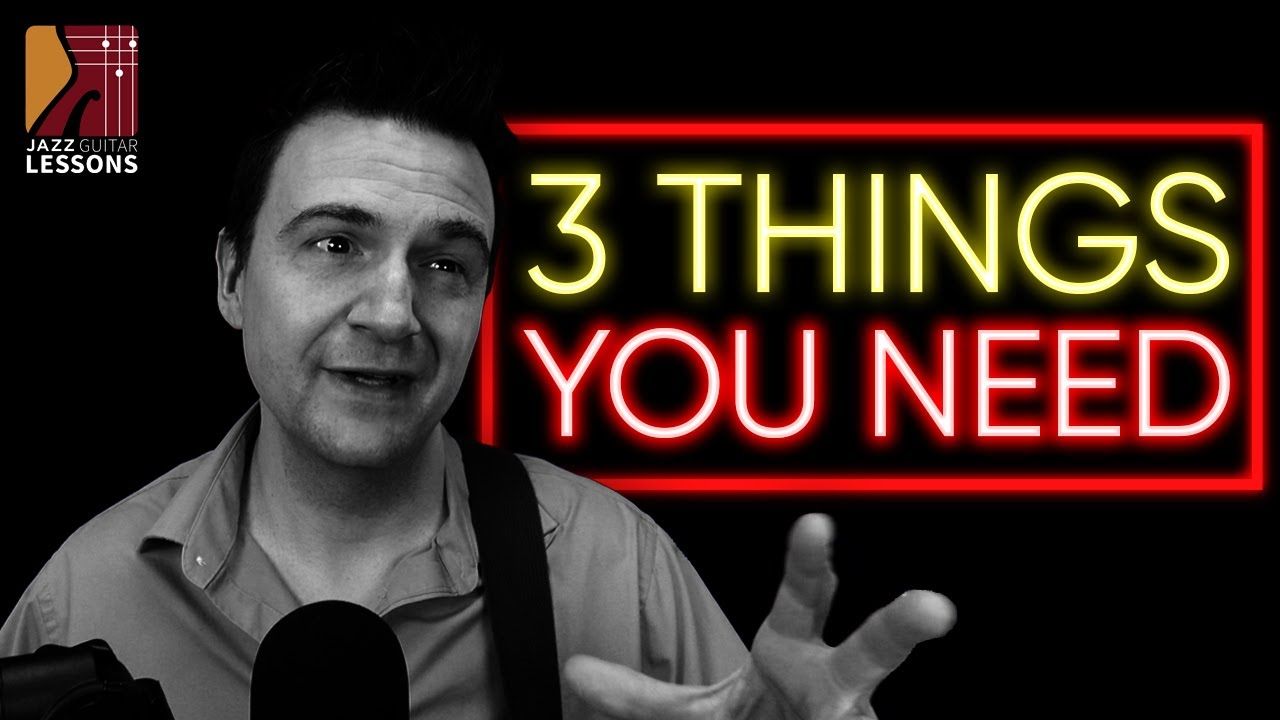
[Review] Your Ultimate Jazz Book: Modern Method
Sep 03, 2024The Ultimate Jazz Guitar Roadmap: Is There One Method to Mastery?
Is there a single jazz guitar roadmap, method, or process that can take you from point A to point Z, making you a master jazz guitarist? Is there a single source to do that? In this blog post, I want to talk about a book you might have already heard of: *The Modern Method for Guitar* by William Leavitt. We'll dig into the contents of the book, how to implement it in your own playing, and determine if it's a good fit for you. Maybe this book is not for you, or maybe it is. We'll find out as we go through this.
Hey guys, my name is Marc from Jazz Guitar Lessons. I've been teaching, mentoring, and coaching jazz guitar students—thousands of them—since 2009. I've been personally using The Modern Method for Guitar myself in my own playing for over 20 years, so I can really attest to the validity of the materials in the book and also tell you the dos and don'ts of trying to use it.
What is The Modern Method for Guitar?
The Modern Method for Guitar by William Leavitt is a widespread, commonly known jazz guitar method. It's often referred to as the textbook for the Berklee School of Music, which is an excellent way of doing a guitar syllabus really deeply. The book is published in three separate volumes, which I recommend buying separately rather than as a single hardcover book. The hardcover version is sort of a brick and doesn't hold well on a music stand.
The Basics
Volume 1 starts at the very basics and is ideal for guitarists who can already play by ear and perhaps want to get into reading music. If you're already an intermediate player, you may find the technical aspect of Volume 1 underwhelming. It's mostly the reading that's going to be the challenge. On the other hand, if you already read music from a classical guitar background, you may find the reading quite easy.
The structure of Volume 1 takes you through the open position, playing the C major scale with open strings, and then moves on to the closed position, playing the C major scale without using open strings. The book is well-organized with a useful table of contents and index, making it easy to refer back to specific topics.
Volumes 2 and 3: Advanced Techniques
Volumes 2 and 3 could have been condensed into one book. They continue with technical aspects, getting scales in several more positions, chord solos, duets, theory lessons, and more. Everything in every position is the takeaway of the entire book. However, getting everything in all positions can be a bit overkill and not always necessary for practical playing and improvisation.
Implementation in Your Playing
To implement this book in your playing, I recommend a page or two per day. Play it exactly as it is and then move on. Unfortunately, this book is not a complete jazz guitar method. There is no single linear path that will teach you everything. However, it's a great way to see the context of academia, taking you from not reading to reading and performing certain things and understanding them on paper fluidly.
Advantages of The Modern Method for Guitar
1. Streamlined. The book is completely linear, meaning each page is a bit harder than the previous one.
2. Simultaneous Learning. It covers harmony, theory, chord structures, chord melody, scales, positions, and reading all at once.
3. Strong Reputation. The method has stood the test of time and is a great foundation for building your music skills.
Disadvantages
1. Not Modern. It doesn't cover modern harmonies and techniques that emerged post-1960s.
2. Not a Song Book. Jazz standards and favorite songs are not part of this method.
3. Guitar-Centric. The method is very focused on the guitar and may not expose you to how other instruments read and write lines.
Conclusion
The Modern Method for Guitar is a rigorous approach to learning jazz guitar but has its limitations. It's great for drilling and building a solid foundation but should be complemented with playing actual tunes and getting instruction from a teacher. Most jazz guitarists only need up to Volume 2 to become proficient.
Consider what you'd like to achieve and decide whether this method is for you. If you have any questions or need further guidance, feel free to leave a comment. I also recommend checking out my step-by-step improv guide and comping mastery video to supplement this method and help you start playing standards.
Thank you for reading, and I'll see you in the next post!









